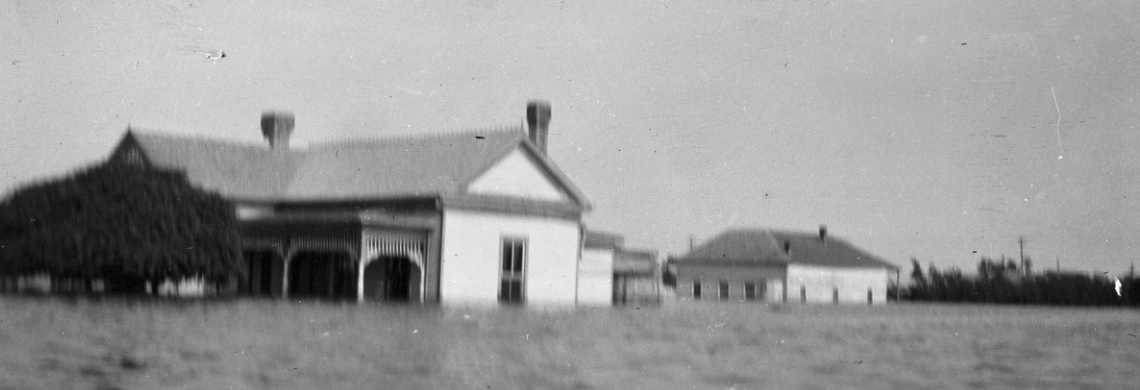Thirty miles north of New Orleans, there is a peculiar break on the interstate—an unassuming boat launch eclipsed by Lakes Pontchartrain and Maurepas, identified only by an exit sign that reads “Ruddock.” Steeped in superstition, the region muddies the barrier between the natural and supernatural, local trauma and tall tale. Clinging to a strip of land between LaPlace and Hammond, it feels remote and inaccessible, home to cottonmouths, wiregrass and, perhaps, more.
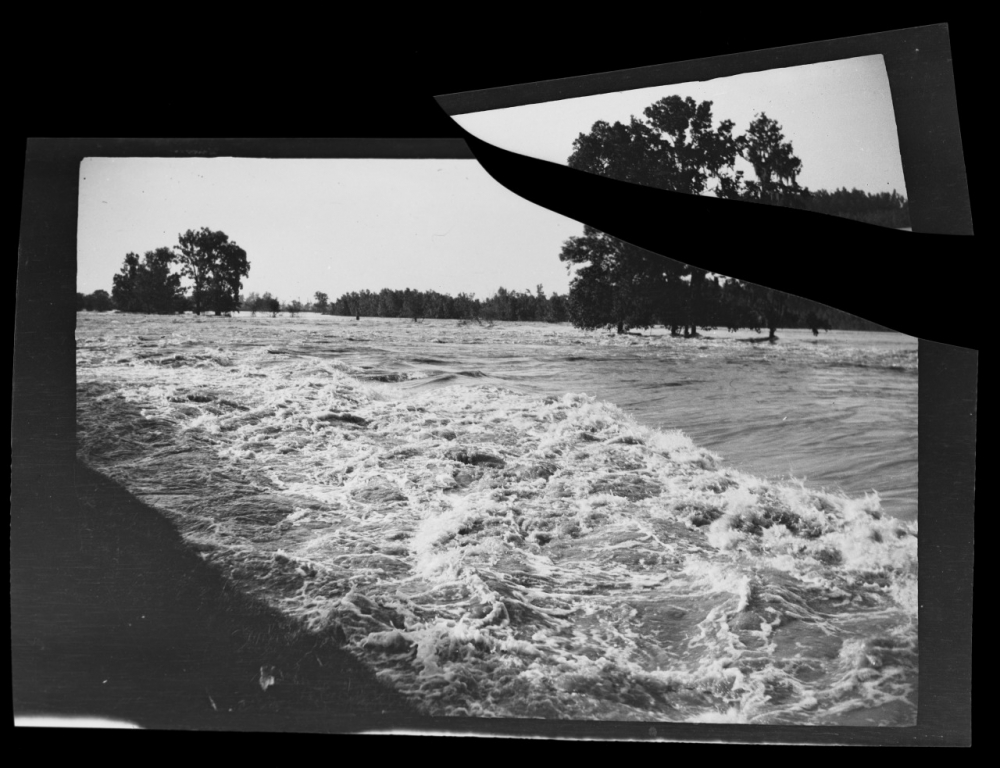
Flood waters at an unidentified shoreline, photograph by Reginald McClure Schmidt, ca. 1900 (THNOC, 1980.194.186)
Explored by Pierre Le Moyne, sieur d’Iberville in 1699, the area was occupied by German immigrants beginning after 1721, when the Portefaix landed in Biloxi, Mississippi, carrying 300 German colonists who later dispersed and migrated along the shores of Lake Pontchartrain. In 1836, their descendants founded the small farming community of Frenier, developing the land for the production of cabbage as well as beets, potatoes, and lettuce. The Ruddock Cypress Company was established north of Frenier and eventually built a sawmill and a company town—Ruddock. By 1910, Ruddock boasted a population of 700, along with a telegraph office, post office, boardinghouse, and gentleman’s saloon. Frenier didn’t grow at the same rate. In 1915, there were only three houses there: George Schlosser’s, Julia Brown’s, and one belonging to an unknown African American family.
Life was far from bucolic. White supremacy was deeply entrenched in the early 20th century South, and Black residents of the area surrounding Ruddock and Frenier lived under the constant threat of racist violence. Life wasn’t easy for white residents, either. The town lacked access to clean water. The region was also without local transportation: a trip to the nearby town of LaPlace required a 10-mile slog through the swamp. Often, women made groceries by flagging down the Illinois Central Railroad bound for New Orleans. They would hand their shopping lists and money to the engineer, who—they hoped—would return with supplies a few days later.
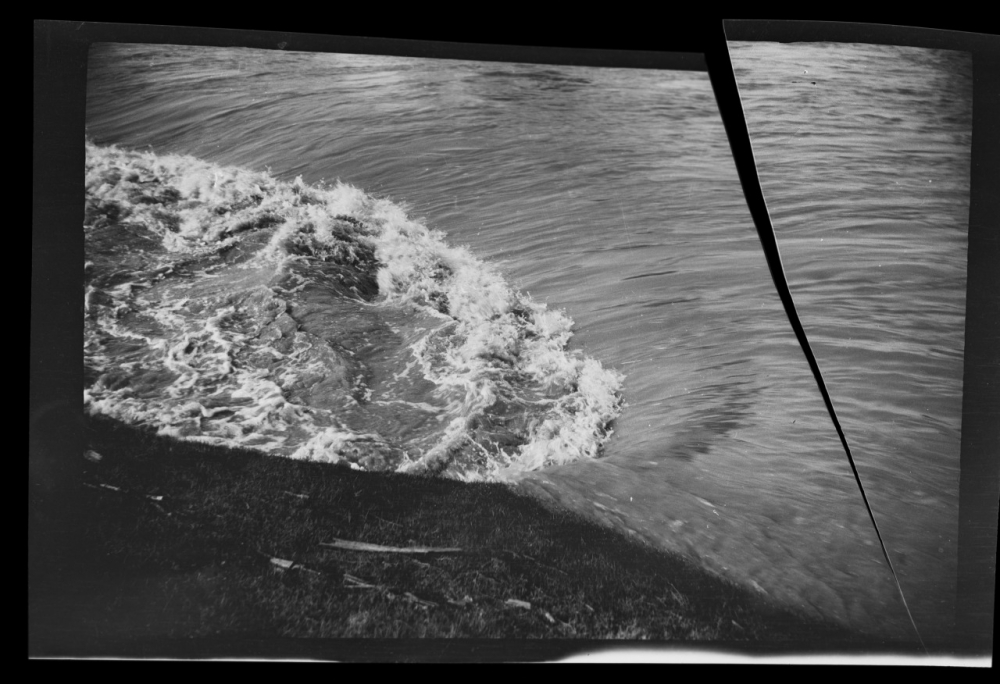
Flood waters at an unidentified shoreline, photograph by Reginald McClure Schmidt, ca 1900 (THNOC, 180.194.185)
Remoteness was only one of the challenges for residents of Ruddock and Frenier. Ruddock suffered a series of catastrophic fires shortly after its establishment, most notably in 1902, when a blaze destroyed the Ruddock mill. The mill was rebuilt soon after, only to be devastated by a tropical storm seven years later. With 15-foot storm tides, the unnamed cyclone caused eight deaths in Frenier and 350 deaths in total.
In 1915, a catastrophic Category 4 hurricane hit southeastern Louisiana. Its 145-mph winds were, at the time, the strongest in documented history. Nearly every building in New Orleans sustained damage. Some towns fared even worse. In Ruddock, residents sought shelter at the schoolhouse and rail station, but the storm ripped the station apart, leaving people at the mercy of the surge. The people were swept away, clinging to anything they could find, from cypress trees to old boats to the roofs of chicken houses. Ruddock lost 58 residents in total, and both Ruddock and Frenier were annihilated. They were wiped out completely.
Hurricanes are common in southeastern Louisiana, but to many, the 1915 storm seemed unnaturally destructive. It gained an otherworldly distinction. Even newspaper reports followed this thread. The Times-Picayune speculated that the tempest had an occult catalyst: Julia Brown.
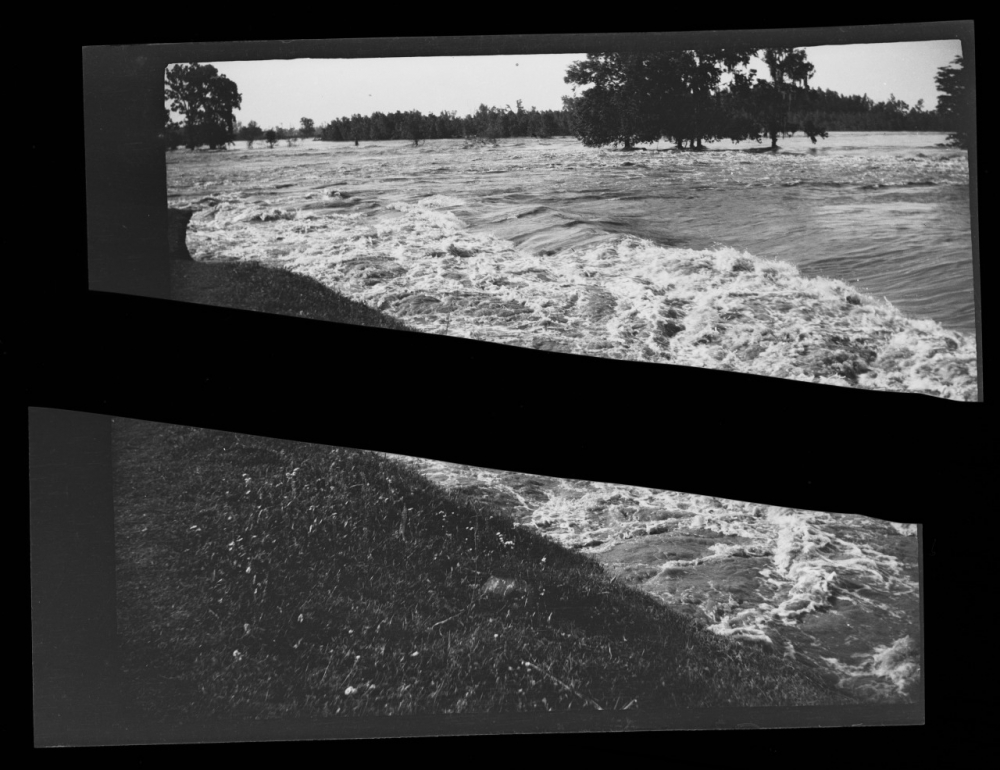
Flood waters at an unidentified shoreline photograph by Reginald McClure Schmidt, ca. 1900 (THNOC, 1980.194.184)
Born in Louisiana around 1845, “Aunt” Julia Brown was a landowning Black woman widely respected in the region. In 1880, she married Celestin Brown, with whom she had children and by whose death she inherited a 40-acre homestead in Frenier. Known for her folk magic and the songs she sang on her porch, one tune in particular gained ghostly significance in the aftermath of the 1915 hurricane: “One day,” it went, “I’m going to die and take the whole town with me.”
As fate would have it, Brown died of old age in 1915. Her funeral was held on September 29— the very day the hurricane struck. Black residents gathered “for miles around” to attend, according to the Times-Picayune, which described the chaos that followed:
Many pranks were played by wind and tide. . . “Aunt” Julia had been placed in her casket, and the casket in turn had been placed in the customary wooden box and sealed. At 4 o’clock, however, the storm had become so violent that the negroes left the house in a stampede, abandoning the corpse. The corpse was found Thursday and so was the wooden box, but the casket never has been found.
Brown and her funeral quickly became a part of local lore. Some suggested that Brown’s song predicted the 1915 hurricane. Others claimed the words were a curse and that Brown had caused the storm on her way out of the earthly realm.
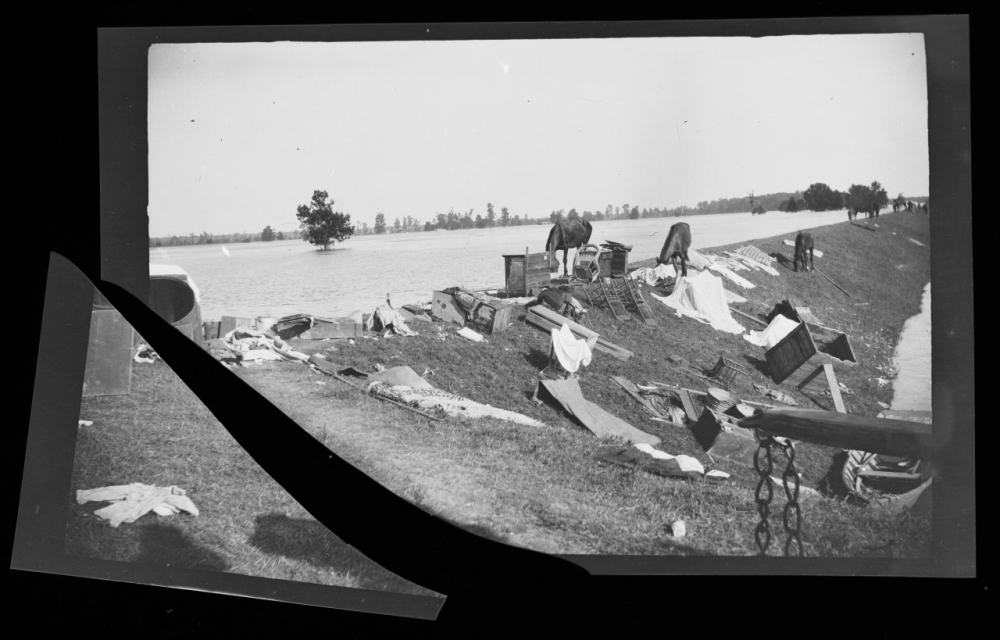
Flood scene, salvaging belongings on the levee in an unidentified location, photograph by Reginald McClure Schmidt, ca. 1900 (THNOC, 1980.194.209)
Frenier was rebuilt after the hurricane, but Ruddock was lost forever. Today, both communities are kept by more gators than people, yet the mythology of the region continues to mutate. Ruddock has become a supposed haunt of a Rougarou, the half-wolf who stalks the swamps of Cajun folklore. Occasionally referred to as a loup-garou, this bloodsucker closely resembles the traditional werewolf and preys on Catholics who don’t observe the rules of Lent.
The stretch of interstate leading to Ruddock was likewise the dumping ground for the Storyville Slayer, a serial killer who preyed on women in the New Orleans area between 1991 and 1996. In more recent years, increasingly extreme hurricanes have contributed to unprecedented wetlands loss in the Pontchartrain Basin. Frenier and Ruddock sit in the region with the highest rates of shoreline erosion.
Like the town where she lived, Julia Brown’s story has fallen into obscurity. Today guides on airboat tours spin yarns about voodoo as they bring tourists to visit a staged crucifix they pretend marks her grave. Lured by rumors of Brown’s roaming spirit, ghost hunters visit the area hoping to spot a lesser-known specter. In the end, it’s Julia Brown—the woman accused of cursing her town and bringing it with her to the other side—that has helped Ruddock and Frenier keep from fading into obscurity.
About The Historic New Orleans Collection
Founded in 1966, The Historic New Orleans Collection is a museum, research center, and publisher dedicated to the stewardship of the history and culture of New Orleans and the Gulf South. Follow THNOC on Facebook or Instagram.

